Welcome to our comprehensive care guide for Echinodorus Horizontalis Mini, a popular aquarium plant known for its attractive appearance and ease of care.
Whether you’re a beginner or an experienced hobbyist, we have the tips and techniques to ensure your Echinodorus Horizontalis Mini thrives in your planted tank. From plant selection to water maintenance, we’ve got you covered.
As a versatile and stunning aquatic plant, Echinodorus Horizontalis Mini can add beauty and vibrancy to your aquarium.
Following our care guide will teach you how to provide the ideal environment for this plant to flourish. So, let’s dive in and discover the secrets of successful Echinodorus Horizontalis Mini care!
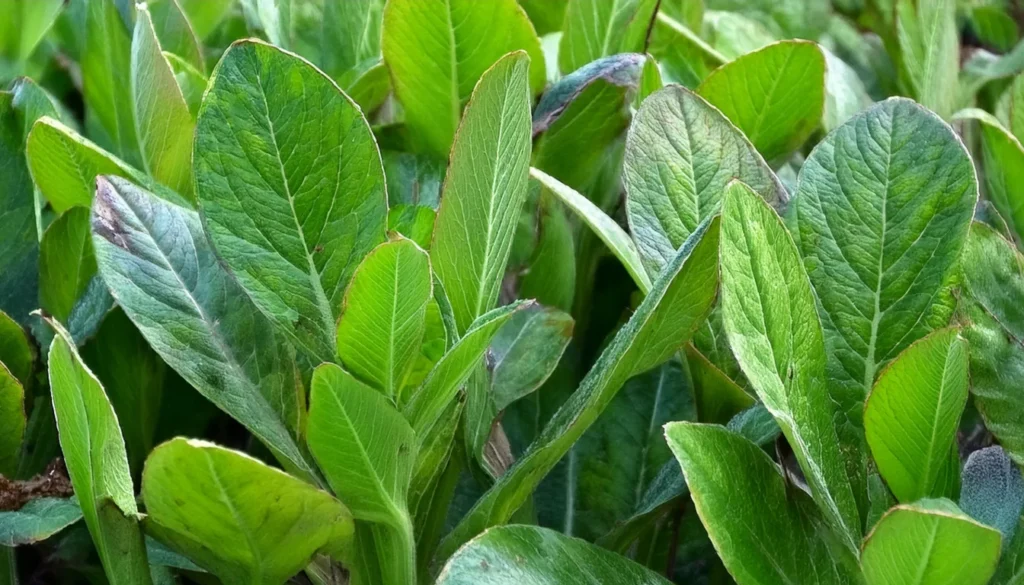
Key Takeaway
- Echinodorus Horizontalis Mini is an attractive and easy-to-care-for aquarium plant.
- Proper plant care and maintenance are essential for the plant’s health and growth.
- Creating the ideal environment in your planted tank involves substrate selection, lighting requirements, and water quality management.
- Regular pruning and maintenance and addressing common challenges will help ensure your Echinodorus Horizontalis Mini thrives.
- Implementing advanced care techniques like breeding and innovative aquascaping can bring your Echinodorus Horizontalis Mini to the next level.
Quick Stats
| Attribute | Details |
| Scientific Name | Echinodorus Horizontalis Mini |
| Common Name | Mini Horizontal Sword, Mini Sword Plant |
| Origin | Cultivated hybrid, precise origin may vary |
| Height | 5-15 cm (2-6 inches) |
| pH Range | 6.5 – 7.5 |
| CO2 Requirement | Low to Medium |
| Growth Rate | Moderate |
| Care Level | Easy |
| Color Form | Green |
| Water Conditions | 22-28°C (72-82°F), soft to moderately hard water |
| Max Size | Typically remains small, suitable for midground planting |
| Lighting | Low to Moderate |
| Supplements | Root tabs or liquid fertilizers beneficial |
| Placement | Foreground to Midground |
| Propagation | Through division of rhizome or adventitious plantlets |
What Is Echinodorus Horizontalis Mini?
Echinodorus Horizontalis Mini, also known as the Horizontal Mini Sword, is a variety of aquatic plants from the Echinodorus genus. Its unique appearance is characterized by long, narrow leaves arranged horizontally.
This plant is suitable for both small and large aquariums as it grows to a height ranging from 4 to 12 inches.
Native to South America, Echinodorus Horizontalis Mini is commonly found in freshwater habitats such as rivers, lakes, and swamps. It thrives in moderate lighting conditions and can be grown either submerged or emersed.
Natural Habitat And Origin
- Echinodorus horizontalis “Mini,” also known as Dwarf Chain Sword, is a popular aquatic plant cultivated for aquariums. However, it’s essential to note that there isn’t a known species with the specific name “Echinodorus horizontalis Mini.” Instead, it’s possible that this is a cultivar or variant of an existing Echinodorus species.
- Echinodorus species are native to various regions in North and South America, primarily inhabiting freshwater habitats such as rivers, streams, ponds, and marshes. These plants typically grow in submerged or semi-submerged conditions, where they thrive in nutrient-rich substrate and moderate lighting.
- The term “horizontalis” suggests a horizontal growth habit, indicating that the plant may spread horizontally along the substrate. As for “Mini,” it likely refers to a compact or smaller form of the Echinodorus species, suitable for smaller aquariums or foreground planting.
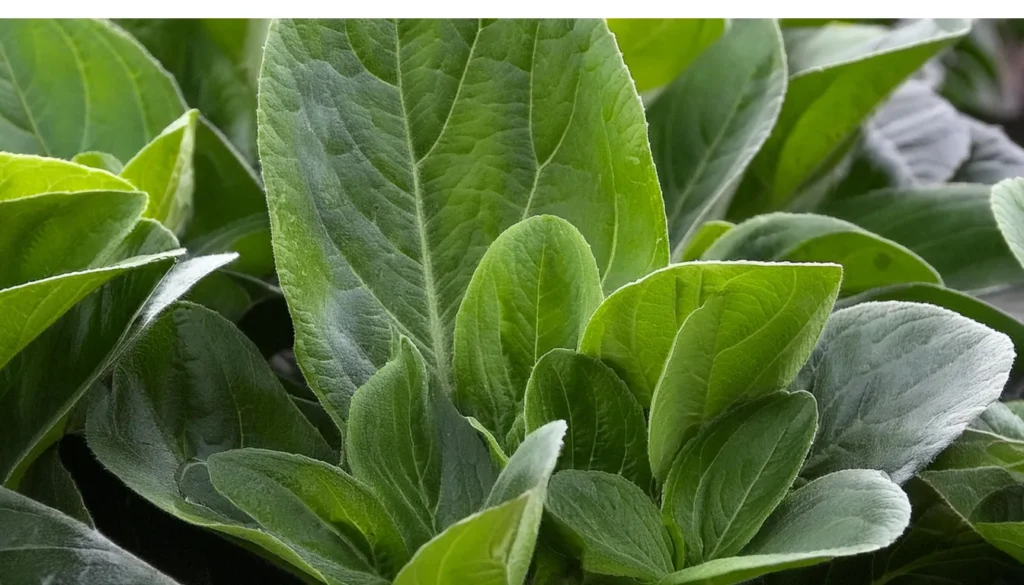
Characteristics Of The Horizontal Mini Sword
- Compact Size: The Horizontal Mini Sword is likely smaller in size compared to traditional Echinodorus species. It may have shorter leaves and a more compact overall growth habit, making it suitable for smaller aquariums or as a foreground plant.
- Horizontal Growth Habit: As the name suggests, the Horizontal Mini Sword likely exhibits a horizontal growth pattern. This means that it spreads horizontally along the substrate, producing runners or stolons that give rise to new plantlets.
- Sword-shaped Leaves: Like other Echinodorus species, the Horizontal Mini Sword may have elongated, sword-shaped leaves. However, these leaves are typically smaller in size compared to larger Echinodorus varieties.
- Green Foliage: The foliage of the Horizontal Mini Sword is likely a vibrant shade of green, typical of many aquatic plants. The leaves may have a glossy or matte texture, depending on the specific cultivar.
- Moderate Growth Rate: While the Horizontal Mini Sword may not grow as rapidly as some larger Echinodorus species, it still exhibits moderate growth under suitable conditions. Regular pruning and maintenance may be necessary to prevent overgrowth and maintain its compact form.
- Foreground Plant: Due to its smaller size and horizontal growth habit, the Horizontal Mini Sword is often used as a foreground or mid-ground plant in planted aquariums. It provides a lush carpeting effect and adds visual interest to the lower levels of the aquarium.
RELATED: The Aquatic Wonder Bacopa Australis To Transform Your Aquascape
Setting Up Your Aquarium
Before introducing Echinodorus Horizontalis Mini into your aquarium, setting up the ideal environment is important. Start by selecting the right substrate that provides the necessary nutrients for the plant’s growth.
A nutrient-rich substrate will support the development of healthy roots and promote vibrant growth. Additionally, ensure that your aquarium has appropriate lighting conditions. Echinodorus Horizontalis Mini thrives in moderate to high lighting, so be sure to provide sufficient light for the plant’s photosynthesis process.
Lighting Requirements For Healthy Growth
- Lighting is a crucial aspect of aquarium plant growth. Echinodorus Horizontalis Mini requires moderate to high lighting conditions to thrive.
- Provide a suitable light source that mimics natural daylight, such as full-spectrum LED or fluorescent lights designed for planted aquariums.
- Ensure that the lighting is evenly distributed throughout the tank and that it reaches all areas where Echinodorus Horizontalis Mini is planted.
- Consider using a timer to regulate the lighting duration and create a consistent light cycle for optimal plant growth.
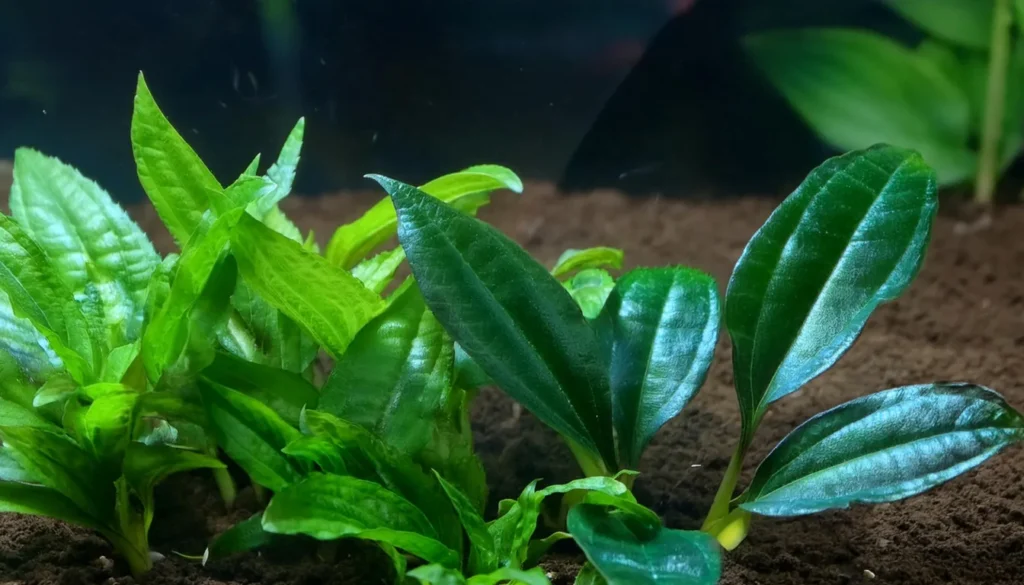
Temperature And Filtration
- Water temperature and filtration are crucial aspects of water quality that directly impact Echinodorus care. Keeping the water temperature between 72 and 82 degrees Fahrenheit creates a tropical-like environment that promotes healthy growth.
- Monitoring and controlling the temperature is important to ensure it remains within this optimal range.
- Effective filtration is necessary to remove toxins, impurities, and excess nutrients from water. A reliable filtration system provides mechanical and biological filtration to help maintain water quality.
- Mechanical filtration removes debris and particles, while biological filtration helps break down organic waste, preventing harmful substances from accumulating in the aquarium.
- Utilizing a suitable filtration system ensures the water remains clean and free from contaminants, supporting the overall health of Echinodorus Horizontalis Mini.
Water Condition For Optimal Growth
- Temperature: Aim for a temperature range of 72°F to 82°F (22°C to 28°C). Most aquatic plants, including Echinodorus species, thrive in tropical temperatures typical of freshwater aquariums.
- pH Level: Keep the pH level within the range of 6.5 to 7.5. This range is slightly acidic to slightly alkaline, which is generally suitable for most aquarium plants. However, specific preferences may vary slightly among different Echinodorus varieties.
- Water Hardness: Echinodorus plants typically prefer soft to moderately hard water, with a general hardness (GH) level of 4 to 15 degrees GH. Adjusting water hardness may be necessary depending on the specific requirements of your plant species.
- Lighting: Provide moderate to high lighting for optimal growth. Adequate lighting is essential for photosynthesis, which fuels the growth and development of aquatic plants. Use full-spectrum LED or fluorescent lights with a color temperature around 6500K to mimic natural daylight.
- Nutrient Levels: Ensure that essential nutrients are available for plant uptake. In addition to naturally occurring nutrients in the water, supplement with liquid or substrate fertilizers to provide macronutrients (nitrogen, phosphorus, potassium) and micronutrients (iron, magnesium, calcium, etc.). Follow dosing instructions carefully to avoid overdosing or nutrient imbalances.

Selecting The Right Substrate
- Choosing the proper substrate is crucial for the successful growth of aquarium plants, including Echinodorus Horizontalis Mini.
- The substrate serves as a source of nutrients for the root system and anchors the plants in place. Opt for a substrate specifically designed for planted tanks, such as nutrient-rich soil or aquatic plant substrates.
- Ensure the substrate is deep enough to allow the plant’s roots to establish and spread.
- Consider layering the substrate with a nutrient-rich layer at the bottom and a finer layer on top to prevent it from mixing with the overlying sand or gravel.
Placement Options In The Tank
- Foreground Planting: Due to its compact size and horizontal growth habit, the Horizontal Mini Sword is well-suited for foreground planting. Place it at the front of the aquarium to create a lush carpeting effect that adds depth and visual interest to the lower levels of the tank. Arrange the plants in a staggered pattern for a natural look.
- Mid-Ground Planting: If you prefer a more layered aquascape, consider placing the Horizontal Mini Sword in the mid-ground area of the aquarium. This allows the plants to serve as a transition between the foreground and background, providing a cohesive look to your aquascape.
- Border Planting: Use the Horizontal Mini Sword to create a border along the edges of pathways or open areas in the aquarium. This helps define the space and adds a neat, manicured appearance to the layout. Trim the plants regularly to maintain a tidy border.
- Accent Planting: Place individual specimens or small clusters of the Horizontal Mini Sword strategically throughout the aquarium to serve as focal points or accent plants. Position them near rocks, driftwood, or other hardscape elements to create visual interest and draw the eye.
RELATED: Cryptocoryne Wendtii Green Planting Guide For Beginners
Recommended Tank Size
- For Small Groups or Individuals: If you plan to keep a small group or a few individual specimens of the Horizontal Mini Sword, a tank size of at least 10 gallons (approximately 38 liters) can be suitable. This size provides enough space for the plants to spread and grow without overcrowding.
- For Dense Carpeting: If you aim to create a dense carpet of the Horizontal Mini Sword or include a larger number of plants, consider a larger tank. A tank size of 20 gallons (approximately 75 liters) or more would provide ample space for a lush carpet to develop.
- Consider Overall Layout: When selecting a tank size, consider the overall layout and design of your aquarium. Ensure that there is sufficient space in the front or mid-ground areas of the tank for planting the Horizontal Mini Sword as a foreground or mid-ground plant.
Suitable Tank Mates For Echinodorus Horizontalis
Small to Medium-sized Community Fish: Many peaceful community fish make excellent tank mates for Echinodorus horizontalis. Examples include:
- Tetras (such as neon tetras, cardinal tetras)
- Rasboras
- Guppies
- Mollies
- Platies
- Dwarf Gouramis
Bottom Dwellers: Species that inhabit the lower levels of the aquarium can coexist well with Echinodorus horizontalis. Consider adding:
- Corydoras catfish
- Dwarf corydoras
- Kuhli loaches
Shrimp and Snails: Many species of freshwater shrimp and snails make great tank mates for Echinodorus horizontalis and help clean up debris. Consider:
- Cherry shrimp
- Amano shrimp
- Nerite snails
- Malaysian trumpet snails
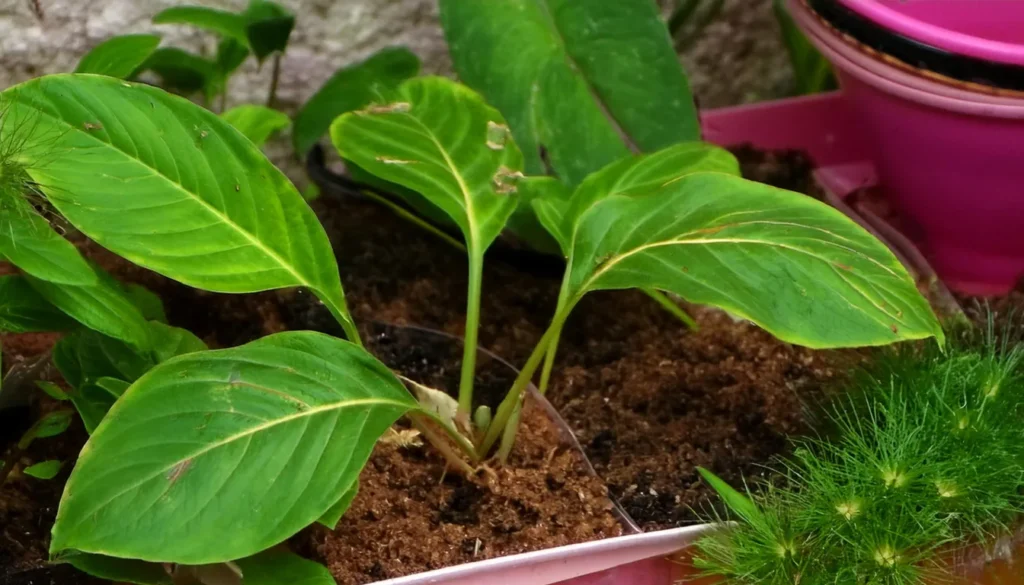
Echinodorus Horizontalis Nutritional Needs
Echinodorus horizontalis, like all aquatic plants, has specific nutritional needs to support its growth and overall health. Providing adequate nutrients is crucial for promoting vibrant foliage, robust root development, and optimal plant growth. Here are the key nutritional needs of Echinodorus horizontalis:
Macronutrients
- Nitrogen (N): Nitrogen is essential for chlorophyll production and overall plant growth. It’s a primary component of proteins, nucleic acids, and other essential molecules. Nitrogen deficiency can lead to stunted growth and yellowing of leaves.
- Phosphorus (P): Phosphorus is crucial for energy transfer, cell division, and root development. It’s involved in processes like photosynthesis and nutrient uptake. Phosphorus deficiency can result in poor root growth and reduced vigor.
- Potassium (K): Potassium plays a vital role in enzyme activation, osmoregulation, and water movement within the plant. It helps maintain turgor pressure, enhances disease resistance, and regulates stomatal opening. Potassium deficiency can lead to weak stems and increased susceptibility to stress.
Micronutrients
- Iron (Fe): Iron is essential for chlorophyll synthesis and enzyme activation. It’s involved in electron transport chains and redox reactions. Iron deficiency can cause chlorosis (yellowing of leaves) and reduced photosynthetic activity.
- Magnesium (Mg): Magnesium is a central component of chlorophyll molecules and is involved in photosynthesis. It also plays a role in enzyme activation and nucleic acid synthesis. Magnesium deficiency can lead to interveinal chlorosis and poor growth.
- Calcium (Ca): Calcium is important for cell wall structure and stability. It’s involved in cell division, membrane permeability, and signaling processes. Calcium deficiency can cause distorted growth and tip burn in leaves.
Cultivating Echinodorus Horizontalis At Home
- Tank Setup: Ensure proper lighting, substrate, and water parameters (temperature, pH, hardness).
- Substrate: Use nutrient-rich substrate designed for planted aquariums to support healthy root growth.
- Lighting: Provide moderate to high lighting with full-spectrum LED or fluorescent lights.
- Water Parameters: Maintain stable water conditions within recommended ranges for temperature, pH, and hardness.
- Planting: Use tweezers to plant individual Echinodorus horizontalis plants into the substrate, leaving enough space for growth.
- Fertilization: Supplement with liquid or substrate fertilizers formulated for aquarium plants, ensuring a balance of nutrients.
- CO2 Injection: Consider CO2 supplementation to enhance growth, especially in densely planted tanks.

Plant Propagation Tips
- Identify Runners: Echinodorus horizontalis produces runners, also known as stolons, which are horizontal stems that grow along the substrate. These runners produce new plantlets at their nodes.
- Encourage Runner Formation: Providing optimal conditions for growth, including adequate lighting, substrate nutrients, and CO2 supplementation if applicable, can encourage the formation of runners.
- Allow Runners to Develop: Once runners start to form, allow them to develop and extend across the substrate. Avoid disturbing them excessively, as this may disrupt the growth process.
- Separate Plantlets: As the runners develop, plantlets will emerge from the nodes along the runner. Once these plantlets have developed roots and leaves of their own, carefully separate them from the parent plant or runner.
- Plant Separated Plantlets: Plant the separated plantlets into the substrate using tweezers or planting tongs. Ensure that the roots are buried securely in the substrate and the leaves are above the surface.
RELATED: Grow Cryptocoryne Lutea For Vibrant Aquariums With This Simple Guide
Benefits Of Planting Echinodorus Horizontalis
- Natural Aesthetic: Echinodorus horizontalis adds natural beauty to your aquarium with its vibrant green foliage and compact growth habit. It creates a lush carpeting effect in the foreground or mid-ground of the tank, enhancing the overall aesthetic appeal.
- Oxygenation: Like all aquatic plants, Echinodorus horizontalis contributes to oxygenation of the aquarium water through photosynthesis. During photosynthesis, plants absorb carbon dioxide and release oxygen, helping to maintain optimal oxygen levels for fish and other aquatic inhabitants.
- Water Filtration: Echinodorus horizontalis helps improve water quality by absorbing nutrients such as nitrates, ammonia, and phosphates from the water column. By reducing excess nutrients, it helps inhibit algae growth and creates a healthier aquatic environment for your fish and other aquatic life.
- Habitat and Refuge: Echinodorus horizontalis provides shelter and refuge for small fish, shrimp, and other aquatic organisms. Its dense carpeting creates hiding places for shy or vulnerable species, helping to reduce stress and promote natural behavior.
Preventing Common Plant Diseases
- While Echinodorus Horizontalis Mini is relatively resilient, it is important to take preventive measures to avoid common plant diseases. Ensure proper water quality by monitoring pH levels and water hardness.
- Maintain consistent lighting conditions and avoid sudden changes in intensity that can stress the plant. Implement a regular cleaning and maintenance routine to remove debris and prevent the buildup of harmful bacteria and algae.
- By providing the plant with optimal growing conditions and a healthy environment, you can minimize the risk of plant diseases and promote vibrant growth.
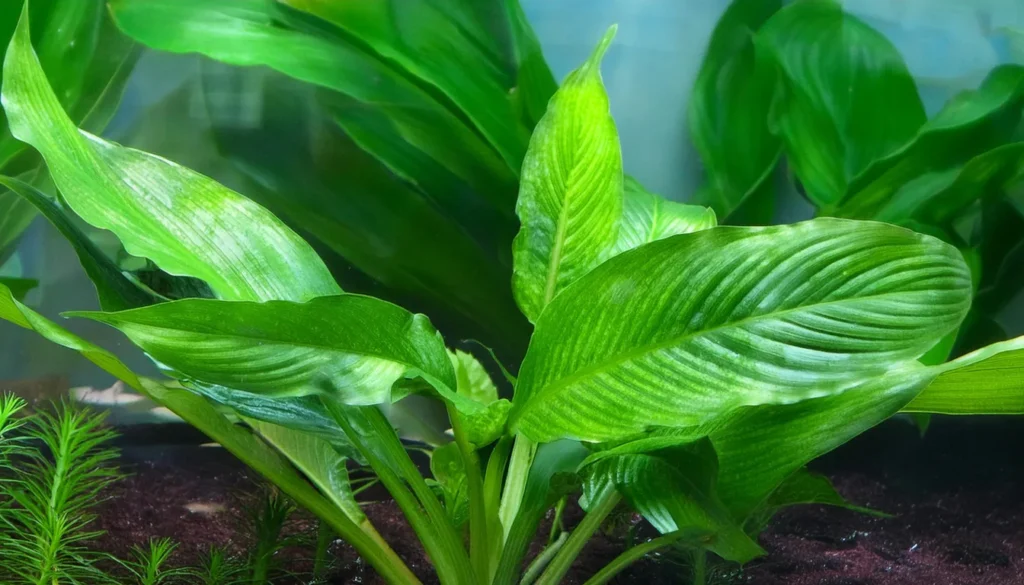
Conclusion
Echinodorus Horizontalis Mini is a beautiful and versatile plant that can enhance the aesthetics of your aquarium. By following the care tips provided in this guide, you can ensure this aquatic plant’s successful growth and maintenance.
From setting up the ideal environment to implementing propagation techniques and addressing common challenges, our comprehensive guide equips you with the knowledge and skills to create a vibrant and thriving Echinodorus Horizontalis Mini-filled tank.
Proper care and maintenance are vital for the overall health and well-being of Echinodorus Horizontalis Mini. You can promote the plant’s vibrant growth and development by providing the right substrate, adequate lighting, and maintaining optimal water quality.
Consider implementing a well-thought-out planting strategy, considering the plant’s positioning and overall aquascaping design, to create a visually appealing and harmonious aquarium.
Frequently Asked Question
How Can I Encourage Bushier Growth In Echinodorus Horizontalis ‘Mini’ Rather Than Taller, Leggy Growth?
Encouraging bushier growth in Echinodorus horizontalis ‘Mini’ involves providing high lighting levels and regular pruning. High lighting encourages the plant to focus on lateral growth, creating a bushier appearance.
Pruning should be strategic; trim taller leaves at their base to stimulate new growth from the center of the plant. Additionally, ensure adequate CO2 and nutrient availability to support dense growth.
What Specific Substrate Composition Best Supports The Root System Of Echinodorus Horizontalis ‘mini’?
The root system of Echinodorus horizontalis ‘Mini’ benefits from a nutrient-rich substrate with good water retention and aeration properties. A mixture of aquatic soil layered with sand or fine gravel on top works well.
The soil provides essential nutrients, while the sand or gravel helps prevent compaction, allowing for better root expansion and water circulation. Incorporating laterite or a root tab fertilizer directly beneath the plant can further enhance nutrient availability.
Can Echinodorus Horizontalis ‘mini’ Adapt To Varying Water Parameters, And How Do Fluctuations Affect Its Health?
Echinodorus horizontalis ‘Mini’ is adaptable to a range of water parameters but prefers slightly acidic to neutral pH (6.0-7.0) and soft to moderately hard water. Sudden fluctuations in water parameters,
especially pH and hardness, can stress the plant, leading to slower growth and potential leaf discoloration. Gradual acclimation to new conditions and maintaining stability through regular water changes and monitoring are crucial for its health.
How Do I Properly Acclimate Echinodorus Horizontalis ‘mini’ When Introducing It To A New Aquarium Setup?
Proper acclimation of Echinodorus horizontalis ‘Mini’ involves slowly adjusting the plant to the new aquarium’s water parameters and lighting conditions. Initially, place the plant in a shaded area to avoid shock from high lighting levels.
Gradually move it to brighter areas over several days. If water parameters differ significantly, float the plant in a bag with its original water in the aquarium, gradually addi
ng small amounts of tank water to the bag over an hour before planting. This reduces stress and helps prevent melting.
What Advanced Techniques Can Be Used To Propagate Echinodorus Horizontalis ‘mini’ Effectively?
Advanced propagation techniques for Echinodorus horizontalis ‘Mini’ include division and adventitious shoot cultivation. For division, carefully separate the plant at the root level into smaller sections, ensuring each has a portion of the root system and leaves.
Plant these divisions into the substrate, spacing them out to allow room for growth. Adventitious shoots may form along the base or on flower stalks; once these shoots develop roots and a few leaves, they can be detached and planted separately.
Both methods require patience and gentle handling to avoid damaging the delicate roots and shoots.
- Unveiling The Wonders Of Riccia Fluitans In Aquascapes - August 7, 2024
- Vallisneria Gigantea Var. Guide To Care And Cultivation At Home - July 31, 2024
- Vesicularia Dubyana Care & Growth Guide Tips For Beginner Gardeners - July 30, 2024
